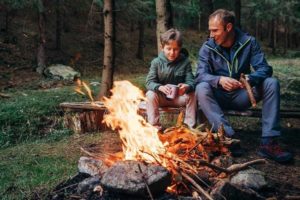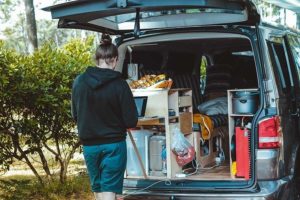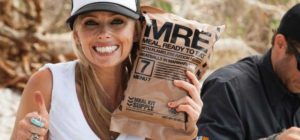Tired Of The Same Old Camping Food? We’ve Got Ideas!
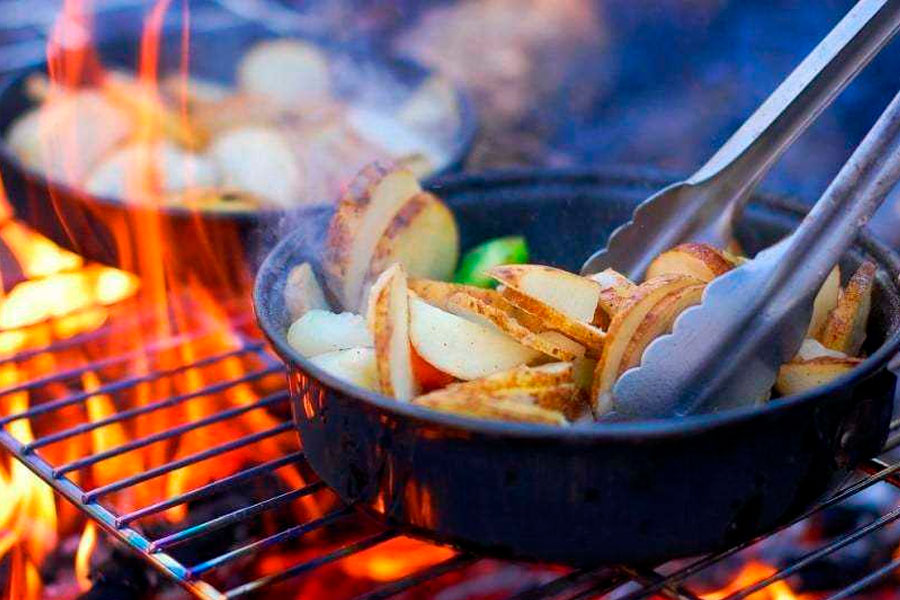
As you backpack through the country side, you’re going to be using up a lot of energy. So when you finally settle down and make camp for the night, you’re going to want food that is going to replenish that energy, give you strength, and perk you up. Camping food also should taste good, too!
Along with the basic camping meals, we’ve got a few camping food ideas that you may want to consider when you’re planning what to bring when you go camping or backpacking.
How Much Camping Food Do I Need?
The tough part of planning for a backpacking or camping trip, you want to have enough food on hand, but you also want to consider what kind of food you bring, as well. You don’t want to pack a bunch of junk like soda, chips, and the like. You want nutritious food that tastes good!
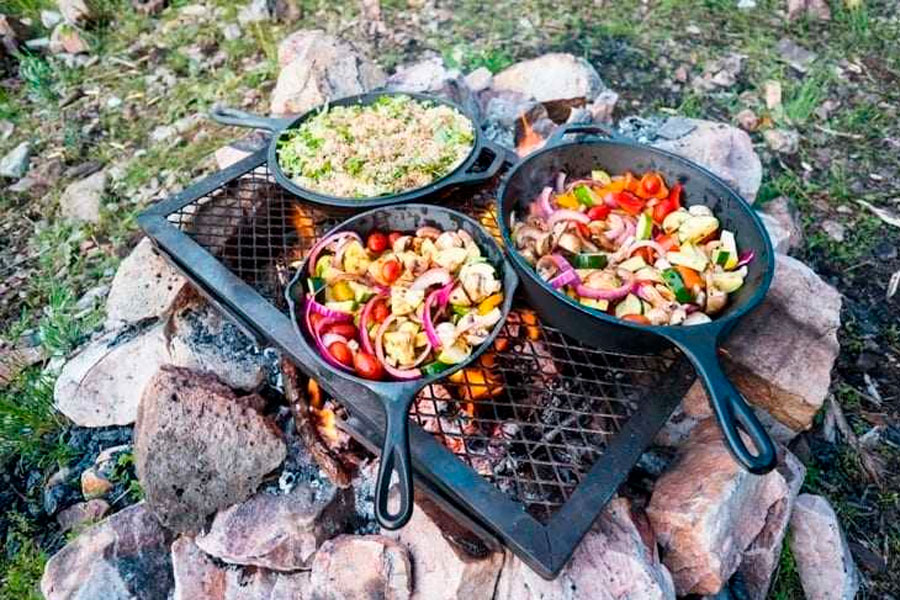
As a general practice, you should plan on bringing between 1.5 to 2.5 pounds (or anywhere between 2,500 and 4,500 calories) of food for each person. This, of course, will depend on the person’s size, weight, and how much energy they will be expending.
With that said, you don’t want to carry too much food, either. It’s a common mistake among novice backpackers is to carry too much food, which leads to extra, unnecessary weight. As you become more familiar with your needs while backpacking or camping, you’ll have a better sense of how much food you’ll need.
How to Meal Plan for a Camping Trip
When you’re trying to plan your camping food list, there are some meal planning considerations that you will want to take into consideration:
- Flavor: Pack what kind of flavors you like. Don’t feel like you need to eat barbeque beans if you don’t like beans.
- Calories: Prior to going on your camping trip, you don’t want to start a calorie restricting diet and feel like you need to adhere to that diet on your trip. You’re going to be expending a lot of energy, so you’re going to need a lot of calories. A calorie deficiency could lead to fatigue, irritability, moodiness, and headaches – all of which will make your trip miserable!
- Nutrition: We mentioned that you don’t want to rely on junk food while you’re camping. You can bring candy, chips, and soda, but those should only be used as a treat and not your primary source of nourishment. Instead, you want to pack complex carbs and protein rich food. Protein and complex carbs are going to give you the energy and stamina you need for those long trips.
- Weight and Space: The food you bring should be lightweight and not have a lot of bulky packaging. You can reduce some of the space the food takes in your pack by repackaging the food in re-sealable plastic bags. Just be sure to clearly label the contents and cooking instructions.
- Prep Time: Camp food doesn’t have to be the complex meals that you may prepare at home. The food you bring should be simple and easy to make. We like bringing no-cook food as backup just in case your stove doesn’t work.
- Water: The type of food you bring is going to depend largely on how accessible water is.
- Cook Time and Fuel: When you’re planning your meals, you will want to take into consideration how long the meals take to cook and bring enough fuel. Some dishes like pasta, potatoes and rice can take a long time, even though the dish itself is relatively simple.
- Cost: Your food budget is going to play another large role in what you bring. If you have the money, you can bring along freeze-dried meals and energy/protein bars. Of course, these easy-to-make convenience meals can be a welcome expense if you’re going on a tough hike and you’ll be too exhausted to prepare a meal from scratch.
Food Options For Camping Meals
As you begin meal planning for your trip, you may think that you’re very limited in what you can have. That doesn’t necessarily have to be the case.

Here are some foods that you may want to consider:
- Fresh Food: Fresh food usually requires refrigeration, which is a luxury you will not have while backpacking. In most instances, the fresh food will only last a day or two in your pack, so if you want a fresh dinner, make that one of your first meals of the trip.
- Dry Food: Dry food includes pasta, rice, soup mixes, drink mixes, and so forth. These foods are light and you can repackage them into baggies to save space.
- Canned Food: If you want to bring canned food, you should opt for small cans, or vacuum-sealed foods, as it will take up less space and weigh less. Possible options include canned tune, chicken, pasta sauce, and even chili.
- Spices: Your favorite spices can turn a bland meal into a delicious feast. Instead of bringing the full bottle, put these in plastic baggies as well.
- Drink Mixes: Water is essential while backpacking, but sometimes you want some kind of flavor. Drink mixes can give your taste buds a treat while you still get the necessary hydration your body needs.
Camping Food Ideas
The food you bring is going to have to be highly nutritious and easy to make. Here are some great options you may want to consider.
Breakfast:
- Instant Cereal like oatmeal, grits, and cream of wheat
- Dried fruits and granola
- Mix of seeds and nuts
- Protein bars and protein powder
- Breakfast bars
Lunch:
- Jerky
- Tuna packets
- Salami
- Tortillas
- Bagels
- Cheese (not cream cheese)
- Bread
- Peanut butter and jelly
Dinner:
- Freeze dried meals
- Canned chili and soups
- Pasta
- Couscous
- Beans
- Cured meats
- Instant mashed potatoes
- Vegetables
- Noodles
Can I Cook While Camping?
Cooking on the trail is very possible! You can bring a camping stove or you can just use a campfire. Just make sure you bring cooking utensils and a pot or pan!
You may be wondering what kinds of things you can cook while camping. Hot dogs and hamburgers aren’t the only hot camp food you need to make! If you’re going to be fishing, you can definitely cook your fish on the fire. You could either fry it in a pan, boil it, or roast it!
Cabela’s has a great recipe for flame broiled fish:
INGREDIENTS
- 1 lb. fillets of fresh, white-fleshed fish such as perch walleye or bass
- Seasonings of choice
- 1 lemon, sliced
- Chives, diced
- 1 stick butter, cut into thin pats
- Orange juice
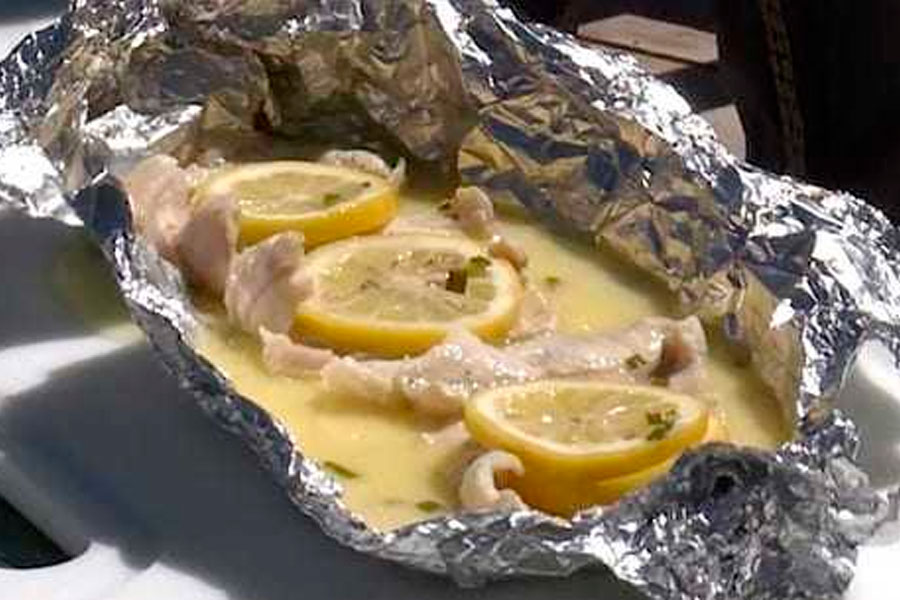
DIRECTIONS
- Tear off a piece of heavy-duty tinfoil about 3-4 times the size of your fish fillet. You’ll want to have plenty of room to seal the foil around the fish once you’ve assembled the ingredients. Turn up the edges of the foil to keep liquid from running out.
- Build the campfire fish by starting with a single layer of fish fillets on the foil. For larger fish, this might be just one fillet. Sprinkle Cabela’s Tequila-Lime Seasoning over the fish, followed by a few slices of lemon. Place two or three pats of butter over the lemon and add in a pinch of chives or diced onion. Splash in a tablespoon or two of orange juice and fold the tinfoil over the fish, sealing the edges well to form a pouch.
- Place the foil pouch on a grill set to medium-low heat, or on a grate set over hot coals. A general rule is cooking fish for 10 minutes per inch of thickness of the fillet, so cook accordingly. Smaller fillets should only take 5-7 minutes. When this time has elapsed, open the foil carefully to avoid any hot steam that will escape. The fish is done with it flakes easily with a fork.
What if you don’t like fish? You can cook other food like chicken, vegetables, and eggs! Reserve America even has a recipe for pasta!
INGREDIENTS
- Noodles: Par-boiled or raw
- Pasta sauce
- Yellow squash
- Mushrooms
- Spinach
- Onions
- Ground meat: turkey or beef
- Cheese
- Minced garlic
- Butter
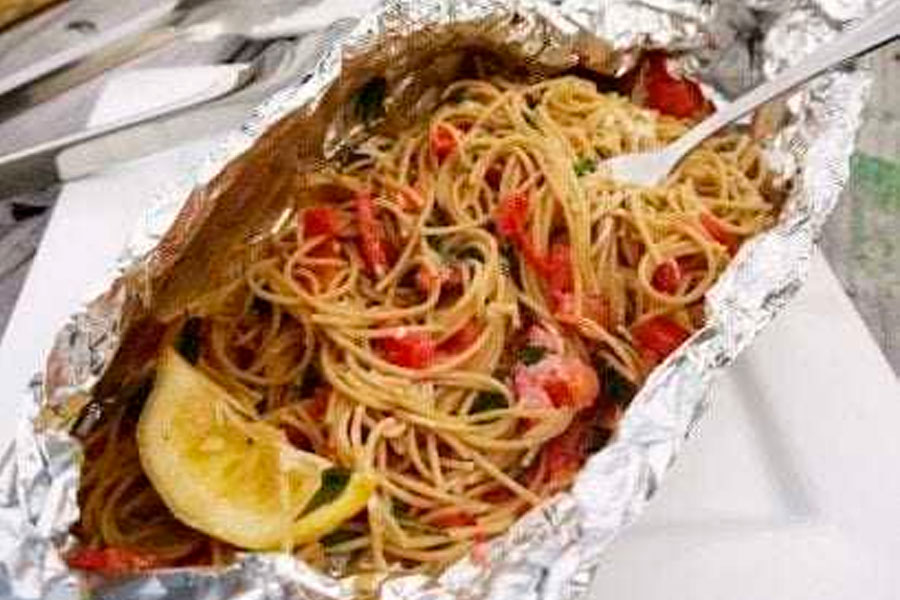
DIRECTIONS
- Add water to your pot, place it over the fire and add in the noodles once the water boils. You can par-boil the noodles at home to save time.
- Rip a 5-inch square of tin foil, and place a small piece of butter on the bottom. Layer your ingredients as follows: Thin layer of sauce on the bottom, noodle, vegetables, meat, cheese, and a small pinch of minced garlic. Continue for three layers, and end with a noodle on top.
- Loosely close your packet and put it in a bed of hot coals, but not directly in the fire. The cook time will depend on how hot your coals are. Check back at 10 minutes.
- Once the meal is a few minutes from finishing, remove your tin foil packets from the fire, pour sauce and cheese on the top and place them on the fire pit grate. This allows the sauce to heat and the cheese to melt.
- For an added touch of home, make grilled garlic bread while cooking the lasagna. Coat crostini or bread slices with olive oil and garlic powder, and toast them on the grate. Serve them with your meal in the tin foil packet.
How To Cook Water for Drinking
While you are backpacking, you’re going to want to stay hydrated. Unfortunately, because water is so heavy in large quantities, you can only bring so much water with you. So what are you to do? You can actually use water that you find out in nature. Of course, you aren’t going to want to drink it straight from the stream – you’re going to want to take steps to purify it.
One of the ways you can do that is by boiling it – it’s actually one of the most reliable methods of purifying water.
To do this, you will want to bring the water to a rolling boil for 1 minute (if you’re at a lower altitude) or 3 minutes (if the altitude is above 2,000 meters). Boiling the water will remove bacteria, protozoa, as well as viruses. A draw back to this is that you will use your cooking fuel. You can account for the need to boil water and bring more fuel.
Some of the other methods you can use to purify water include:
- Gravity filters
- Pump water filters
- Sip/Squeeze water filters
- Ultraviolet light water filters
- Water purification tablets
Conclusion
Whether you are going backpacking for a few days or you’re going camping, you are still going to need to eat. Eating out in the wilderness can be a challenge if you aren’t prepared, which is why it is very important that before you actually head out, you have some kind of meal plan.
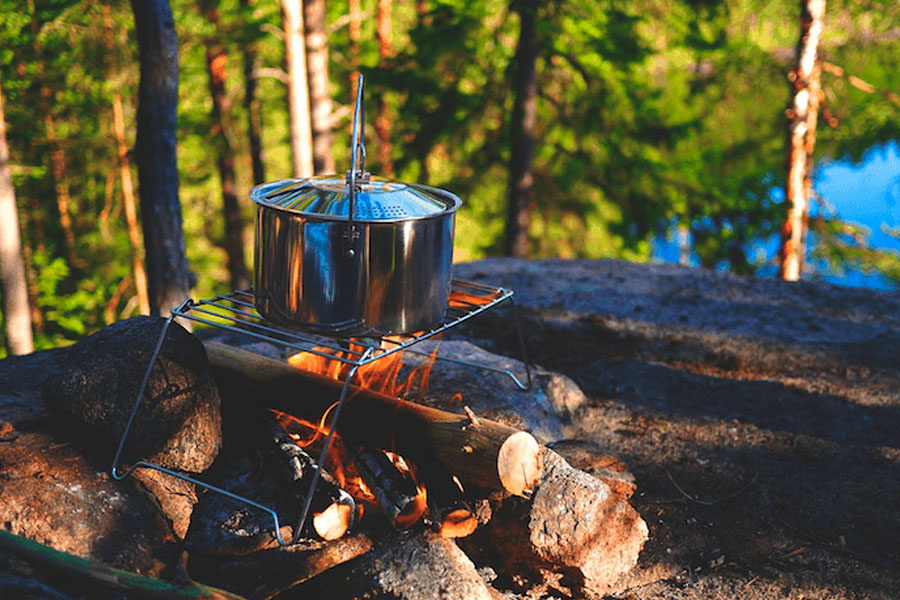
The best camping food should be delicious, sure, but it also needs to provide you with the nutrition your body needs, especially since you will be using a lot of energy along the way. You will want to bring with good quality proteins, complex carbs, and healthy fats.
Some people believe that when you’re eating on the trail or at the camp site, you have to make do with trail mix, dried meat, and sandwiches. Although these foods are good staples, you aren’t limited to just them! With some planning, you can have delicious meals out in the woods. Just be sure that you bring enough food to last the entire trip (and some extra, for just in case), but you also have enough fuel and some cooking supplies. Check out our backpacking checklist to see a full list of backpacking essentials!
Resources:


